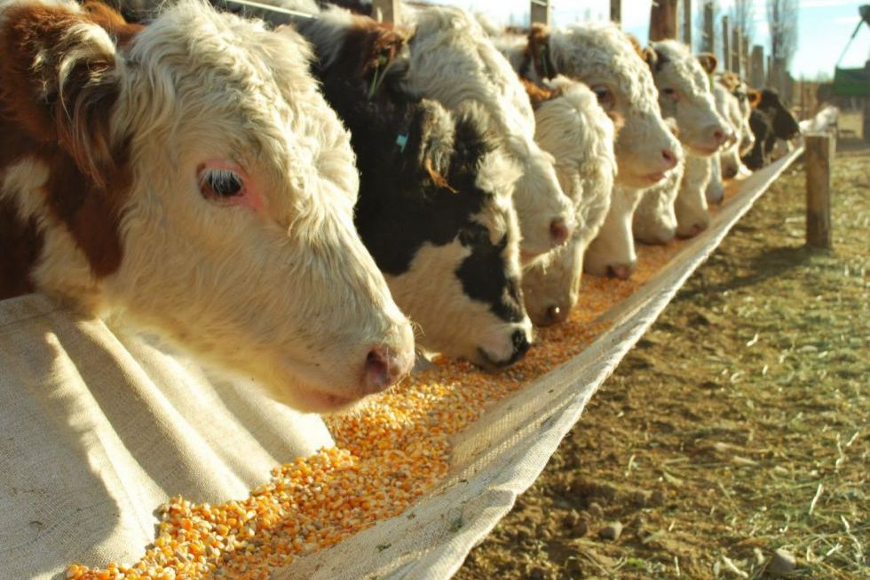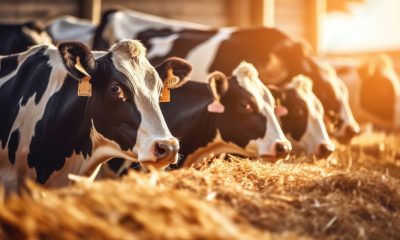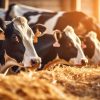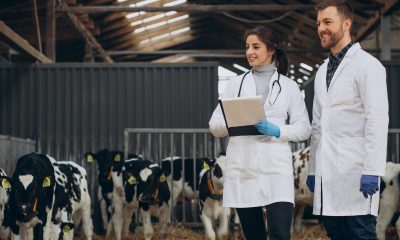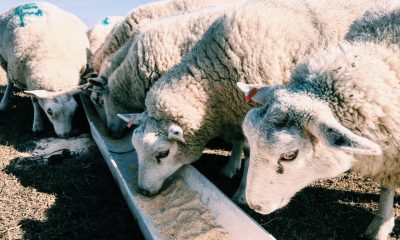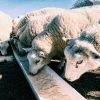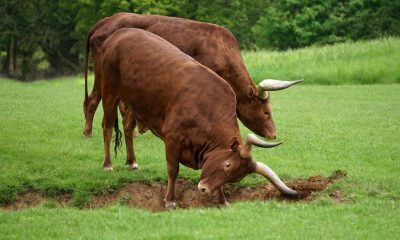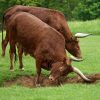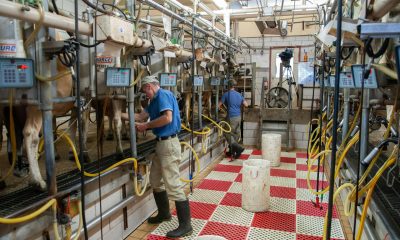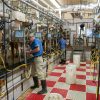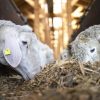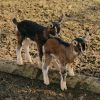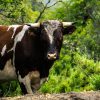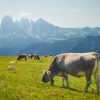Beef cattle are ruminants, and they have a complicated digestive system. This helps them digest and break down a variety of feed sources. This adaptability of the bovine digestive system gives farmers a large number of options to choose from to feed their cattle. But the selection of these feeds affects the growth and health of the animal. This is of prime importance on any farm, especially for beef cattle.
In most parts of the country, beef cattle are fed on grass feed. This is the most common way, and the digestive system of the animal is designed to digest this complex stuff. But this can only give the animal a more or less steady growth because the energy available from these feeds is mediocre. Also, another issue with this practice is the lack of availability. Grass feeds are not present in the same quantity all year round, and their storage is even more difficult. Feeding corn to beef cattle provides a solution to the above problems along with some additional problems faced by beef cattle farms. Thus, these grain feeds, especially corn feed, have been used as a primary energy source or supplementary energy source for beef cattle for many years due to their growth benefits and other factors.
Corn feed is a high energy feed.
When we compare corn feed to other feeds, corn feed has a high starch content and low protein content. This means that corn feed can provide more energy when compared to grass feed. Corn feed carries about 72% starch (carbohydrate) and proteins. In these proteins, about 65 % of proteins are escape proteins or bypass proteins. We know that beef cattle are ruminants, which means that they have a four-part stomach. They bring their food back up after swallowing to ruminate. Since the 65% of proteins present in corn feed are escape proteins, they do not get fermented in the rumen. These escape proteins pass through to the small intestine and are digested there. The remaining proteins are digested in the rumen, providing high efficiency in their digestive system. This enhanced digestive function helps in an accelerated weight gain in beef cattle.
Beef cattle are mainly fed on corn feed during their finishing process. This starts from 5-6 months before the slaughter. Cattle in feedlots are provided with 90% grain feed which mainly includes corn. This gives the animal a high-calorie diet and helps attain the finished weight faster.
Corn can also be used as a forage supplement. The need for forage supplements arises when there is a large quantity of forage, but there is an inadequate nutrient supply for the animal. In such scenarios, corn is one of the most economical options to be used as a supplement. Corn feed can be used to correct the energy deficiency without compromising on forage utilization.
Corn feed is a palatable feed
Even though beef cattle can digest almost any kind of feed intake, palatability is an important factor; they tend to take more of the feed which is tasty to them. Generally, studies have shown that beef cattle prefer corn feed over other grass-based meals. This will result in a higher intake of the feed which in turn increase the total weight of the animal.
This eliminates the question of how much corn feed one can feed their animal because beef cattle would probably eat all the corn feed given to them and poses the question of how much corn feed should one feed the cattle. This depends on the stage of production, quality of available forage and nutritional status of cattle. Depending on these factors, one can give corn feed as a substitute or a supplementary feed.
Corn fed beef has a better flavour
Feeding beef cattle with corn feed during the finishing stage increases the fat to muscle ratio in them due to the sudden weight gain. This is known to increase the flavour of beef. Generally, corn fed beef has better texture and flavour than the usual grass-fed animals. Corn fed beef is known to have a buttery feel and is said to be much more tender than grass-fed beef. This is due to its high-fat content. This high-fat content also helps while cooking the beef. All these factors make corn fed beef more preferred than the other kind.
Corn feed is highly economical
Beef cattle should be well looked after to obtain optimum productivity. This means that the owner should invest their time and money in them till they stay in the shed. By adapting to grass feed, the beef cattle will take a large amount of time to attain the required weight. The owner must invest in the fodder, water and health care of the cattle during this time. On the other hand, corn feed help in fast weight gains in beef cattle, making them ready for slaughtering much faster. This considerably reduces the amount of time the beef cattle spend in the shed, making corn feed more economical. Grass fed beef cattle, on the contrary, need high maintenance and investment, which makes them costlier and less preferred than corn fed beef.
Moreover, corn feed has higher energy content in them. Thus it can provide more energy with less quantity as compared to grass feed, thus reducing the cost of feed. Corn feed is relatively easier to store and is proven to last longer than grass feed.
Environmental impact
When we look at the environmental impact caused by the corn fed and grass fed beef cattle, the latter produces 500 percent more greenhouse gases due to their longer lifespan.
Also, grass fed beef cattle require pasture lands to obtain the grass feed. These pasture lands are not considered as natural environments, and the environmental impact is serious when forests are cleared to build these lands.
Conclusion
Corn feed is of prime importance when it comes to beef cattle because it provides the animal with an additional amount of energy and facilitates immediate weight gains making it ready faster than other alternatives. This makes corn fed beef a highly economical option and provides better flavoured and textured beef.
One thing that is to be kept in mind is the amount of corn feed one should give their cattle. Since corn feed is a very high energy feed, overfeeding cattle with corn feed will result in digestive and gas problems in the animal. Thus, one must take extreme care while corn feeding and consider facts like production stage and nutrient requirement of the animal.
